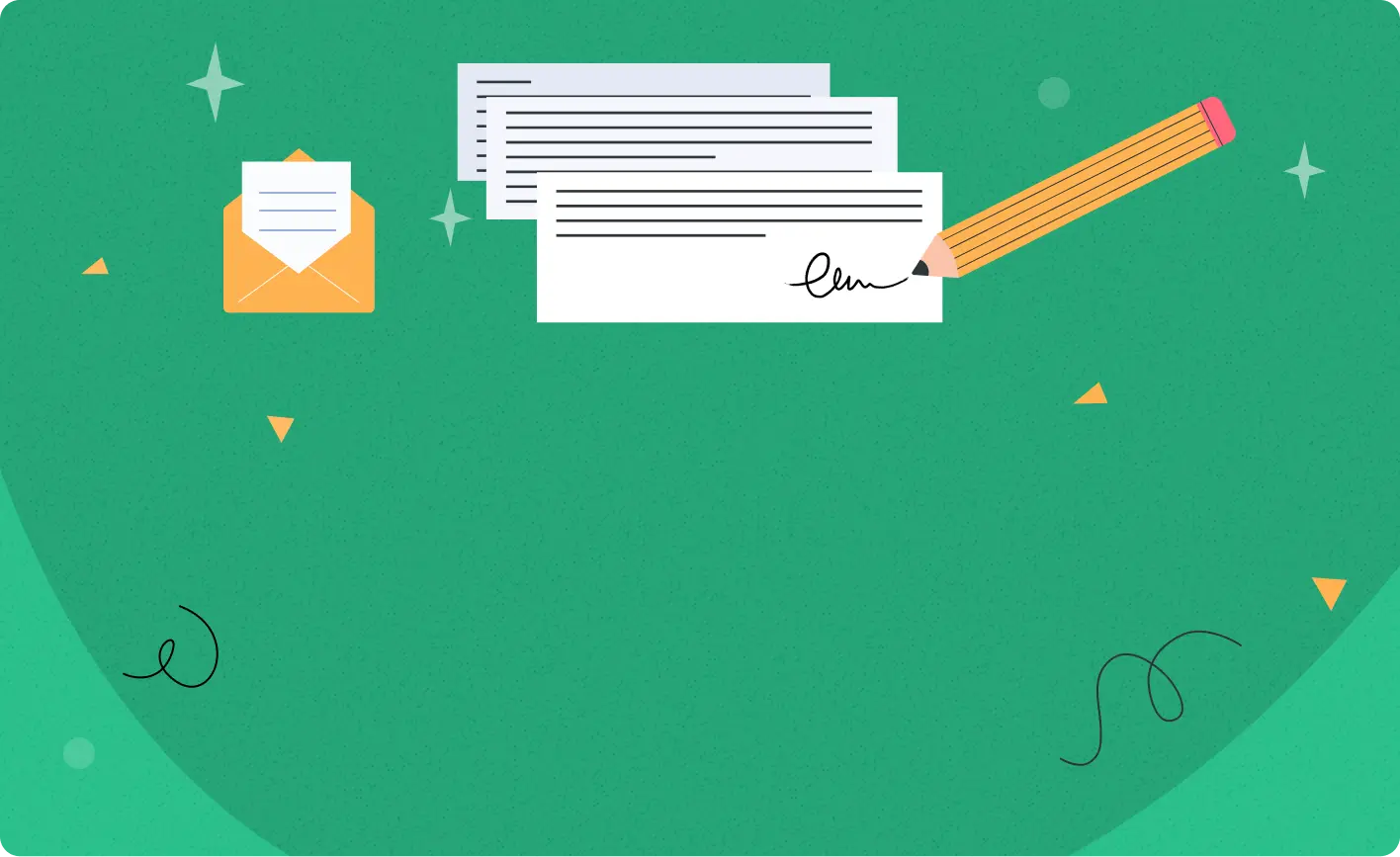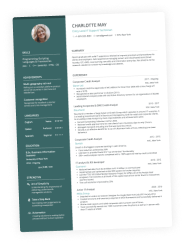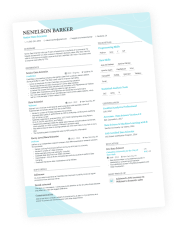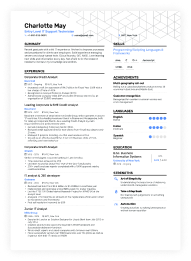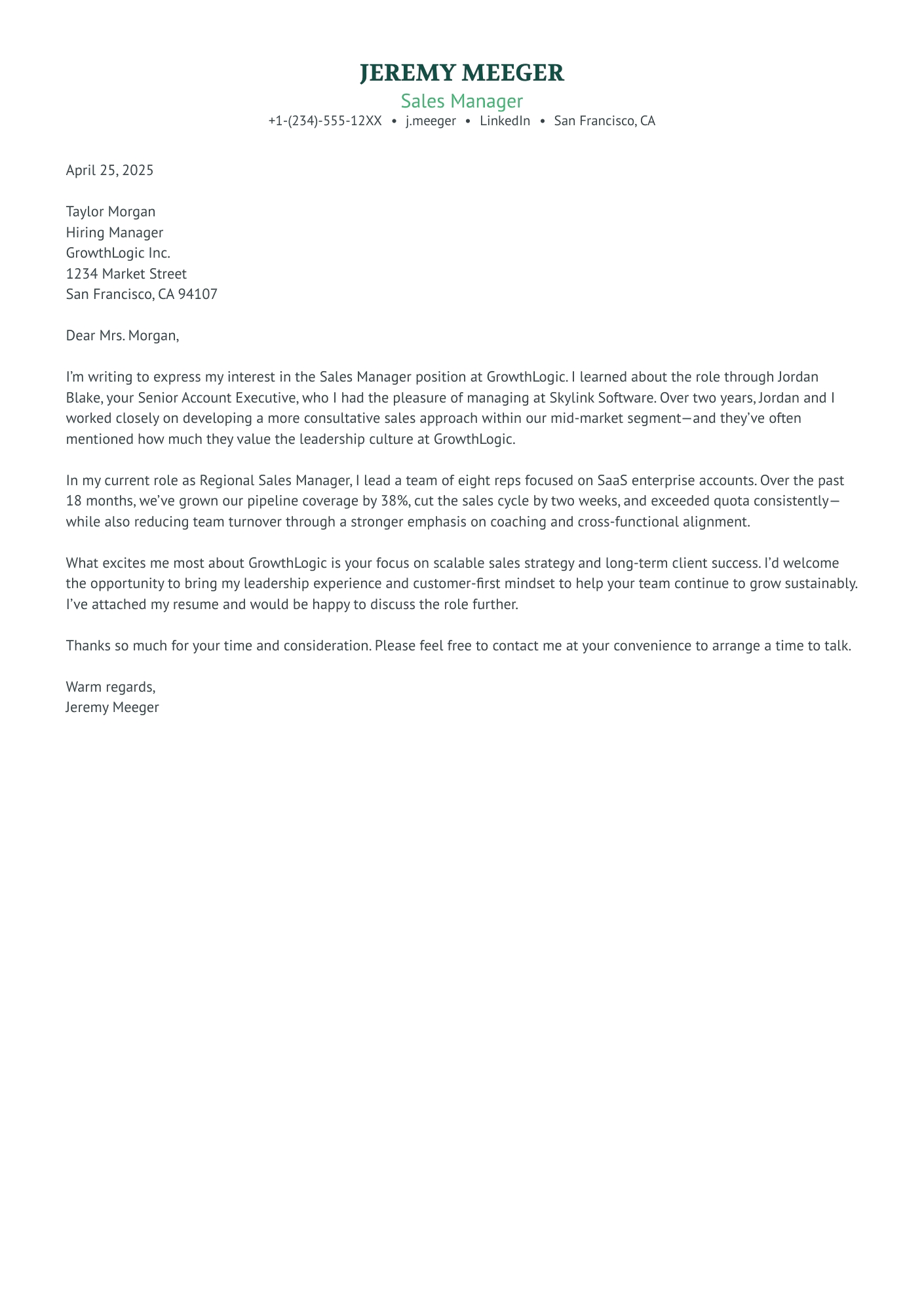Cover letters still matter, even in a world of one-click applications. They give you a chance to connect with the hiring manager on a more personal level and reassure them you’re the right fit—beyond just your resume.
And you can strengthen them even more if you include a referral.
In fact, did you know referrals are linked to fewer screening steps and lower screening costs for employers? That means if someone vouches for you, especially someone the hiring manager trusts, you’re already ahead of the competition.
When you mention a mutual connection in your cover letter, you're not just name-dropping for the sake of it—you’re showing the employer that someone they know and respect believes in your skills, your character, and your fit for the team.
In this guide, we’ll show you how to do it naturally and in a way that actually boosts your chances.
Key takeaways
- Referrals can help you bypass hiring hurdles by lowering screening time and building instant trust.
- Name-dropping works best when it’s relevant and natural—don’t force it just to impress.
- You don’t need an insider—former coworkers, mentors, or respected industry peers can work too.
- Always get permission before mentioning someone’s name—and share your cover letter with them first.
- Place the name early in your letter, ideally in the opening paragraph, to catch the hiring manager’s attention.
- If someone says no, it’s not the end—focus on building genuine connections that may lead to a better opportunity later.
Drop your resume here or choose a file.
PDF & DOCX only. Max 2MB file size.
What is name-dropping in a cover letter?
Name-dropping in your cover letter means mentioning a mutual contact you share with the hiring manager. A referral like this sends a strong trust signal to potential employers—someone they already respect is backing you.
This shared connection can be a friend, a networking acquaintance, a mentor, or an ex-coworker. The important thing is that there’s a professional relationship established, and you’re certain this person will speak positively of you.
Haven’t started on your cover letter yet? Try Enhancv's free AI Cover Letter Generator to create one tailored to your resume—in just a few short clicks. Check out the example below to see what you can achieve.
Should you name-drop in a cover letter?
Name-dropping in your cover letter is a strategic move. It signals that someone within the company—or connected to it—is willing to vouch for you. This form of internal recommendation can give you the edge you need in a competitive job market.
However, name-dropping shouldn’t be an end in itself. If it feels forced or out of place, it can come across as awkward or even insincere. When done right, though, it can emphasize your experience and ability to work effectively with others.
One more important note: always get permission first. Even if you have a close relationship with the person you're planning to mention, it’s good form to ask if they’re comfortable being included. There’s always a chance the hiring manager will reach out to them—so it’s essential they’re not caught off guard.
Name-drop readiness quiz
Are you ready to confidently name-drop in your cover letter? Let’s find out in five quick questions.
1. Do you know someone at the company you're applying to?
- Yes, I know someone directly.
- Sort of—I’ve connected once or twice, but not well.
- No, I don’t know anyone (yet).
If you don’t know anyone, consider reaching out on LinkedIn or attending relevant industry events.
2. Is this person likely to speak positively about your skills or work ethic?
- Yes, absolutely!
- I think so, but I’m not 100% sure.
- Not really, we haven’t worked together directly.
Make sure the person would genuinely advocate for you—credibility matters more than name recognition.
3. Have you asked for their permission to mention them in your cover letter?
- Yes, I’ve gotten the green light.
- I haven’t asked yet, but I plan to.
- No, and I’m not sure I will.
Always ask first. A quick email or message can prevent awkward surprises and strengthen trust.
4. Can you clearly connect the person to the company or the role you’re applying for?
- Yes, they work there or used to, or they referred me directly.
- They’re loosely connected to the company.
- No direct connection.
The closer the connection, the more effective the name-drop.
5. Does name-dropping fit naturally into the story you're telling in your cover letter?
- Yes, it supports my narrative and adds context.
- I can fit it in, but it might feel a little forced.
- Not sure where it would go.
Don’t just drop a name—use it to reinforce your fit for the role or the values of the company.
Done? Let’s check your score:
- Mostly A’s: You’re name-drop ready! Your connection is solid, and you’ve handled it professionally.
- Mostly B’s: Almost there—do some relationship-building or get explicit permission first.
- Mostly C’s: It’s not time to name-drop yet. Focus on making authentic connections first.
If you’ve got mostly A’s or B’s, it’s time to discuss the mechanics of name-dropping in your cover letter.
How to name-drop in a cover letter?
Hiring managers value referral recommendations, as they come from within the company they work at, and come from trusted employees.
But here’s the thing: your connection doesn’t have to be an insider. Even if the person you mention works somewhere else, their name can still carry weight—especially if they know your work and believe you’re a great fit for the role.
Let’s review the process.
Find someone who can vouch for you
Start by thinking about people you already know—past coworkers, mentors, friends, even casual LinkedIn contacts. Do any of them work at the company you’re applying to? Or used to work there? Or maybe they just know someone on the inside?
The goal here isn’t just to name-drop randomly—it’s to mention someone who genuinely knows your work and would speak well of you.
If no one comes to mind right away, don’t stress. Here are a few places to look:
- LinkedIn: Search the company, then filter to see if you have any mutual connections.
- Alumni groups: Check if anyone from your university or previous jobs has ties to the company.
- Your network: Ask around—sometimes a friend of a friend can open a door.
- Former coworkers: Even if they’re not at the company now, they can still be a strong reference if their name means something in the industry.
Once you find someone who fits, move on to step two: figuring out how strong their connection is and whether it makes sense to bring them into your cover letter.
Don’t underestimate networking
Networking isn’t about collecting contacts—it’s about building real, two-way relationships over time. The strongest endorsements come from people who know your work, trust your abilities, and are willing to vouch for you without hesitation.
You can build these relationships through thoughtful LinkedIn interactions, staying in touch with former colleagues, or meeting people at industry events. Instead of treating networking as a quick way to land a job, think of it as a long-term investment in your professional community.
When you eventually ask for a referral or a name-drop, it will feel natural—because the trust was already there.
Determine their reach
Knowing someone personally is only part of the process. The next thing to consider is whether the person’s name would mean something to the hiring manager.
If they currently work there, great—ask yourself, do they know the hiring manager or someone on the team? Have they been there long enough to have some influence?
If they don’t work there anymore, or never did, that’s okay too. You just want to make sure they know your work really well, they’re respected in your field or industry, or there’s a logical connection between them and the role or company.
Ask for permission to use their name in your cover letter
This one is super important: always get consent before you use someone’s name in your application materials.
It shows respect and helps them prepare in case the hiring manager contacts them with some additional questions about you.
What is an employee referral program?
An employee referral program is a system many companies use to encourage their current employees to recommend strong candidates for open roles.
Referrals through these programs often carry more weight—they can help you stand out from other applicants, move through the hiring process faster, and even increase your chances of getting an interview. Plus, many companies offer bonuses to employees whose referrals get hired, so it’s a win-win.
Keep in mind that some referral programs require the employee to submit your resume internally, so be proactive: send them everything they might need upfront, like your resume, cover letter, and the job posting link.
What if they say no?
Don’t panic—it happens. Maybe they’re not comfortable being contacted, or they’re unsure about their relationship with the company, or they just don’t feel like they know you well enough to vouch for you. It’s not a reflection on you.
Thank them anyway and try to find someone else who will feel more comfortable with the proposition.
Drop their name into your cover letter introduction
Once you’ve got the green light, you want to mention your contact’s name right near the beginning of your cover letter. That way, it grabs the hiring manager’s attention straight away—positioning you as someone with a professional endorsement that adds instant weight to your application.
If you’re sending your cover letter as an attached file in an email, make sure you mention your contact’s name in both your email’s body text and the full-length cover letter you attach. This way, you ensure that the referral will be noticed.
Send them a copy of your cover letter before you send it out
This is especially important if you tell a story that involves them, so they can confirm they’re OK with it.
That way, they’d be prepared for any potential questions that could arise from the hiring manager.
Template for name-dropping in a cover letter
Below are two easy-to-use templates tailored for the most common name-dropping situations: one for when your contact works at the company you’re applying to, and one for when they don’t, but still know your work well enough to recommend you.
Just tweak the details to match your experience—and you’re good to go.
When your contact works at the company
[Your Name]
[Your Address]
[City, State, ZIP Code]
[Email Address]
[Phone Number]
[LinkedIn Profile or Portfolio URL]
[Date]
[Hiring Manager’s Name]
[Company Name]
[Company Address]
[City, State, ZIP Code]
Dear [Hiring Manager’s Name],
I’m reaching out to express my interest in the [Job Title] role at [Company]. I learned about the position through [Contact’s Full Name], who [briefly explain connection—e.g., “I worked with at X” or “is a current team member at your company”]. They spoke highly of the team and thought my background in [your area of expertise] would be a great match for what you're looking for.
With [X years] of experience in [your field], I’ve led [mention a relevant achievement or responsibility], and developed a strong foundation in [key skill 1], [key skill 2], and [key skill 3]. I’m especially drawn to [Company’s name] because of [a sentence or two on why you’re excited about the company/role—align this with their mission, recent projects, or values].
I’d love the opportunity to bring my experience to your team and contribute to [specific team goal or value]. I’ve attached my resume for your review and would be happy to chat further at your convenience.
Thank you for your time and consideration!
Best regards,
[Your Full Name]
When your contact doesn’t work at the company (external reference)
[Your Name]
[Your Address]
[City, State, ZIP Code]
[Email Address]
[Phone Number]
[LinkedIn Profile or Portfolio URL]
[Date]
[Hiring Manager’s Name]
[Company Name]
[Company Address]
[City, State, ZIP Code]
Dear [Hiring Manager’s Name],
I’m writing to express my interest in the [Job Title] position at [Company]. I was encouraged to apply by [Contact’s Name], a [Your Relationship—e.g., former manager, industry mentor, previous teammate], who felt this role aligns well with my background and skills in [Your Field].
During my time at [Previous Company or Role], I [briefly describe a relevant achievement or strength]. Through that experience, I developed expertise in [Skill 1], [Skill 2], and [Skill 3], which I believe would bring value to [Company].
I’m drawn to [Company] because of [something you admire or connect with], and I’d love the opportunity to contribute to the team. I’ve attached my resume and look forward to the possibility of speaking further.
Thanks again for considering my application!
Best,
[Your Name]
Frequently asked questions on name-dropping in cover letters
It’s perfectly normal to have some more questions. Check below to see if we’ve covered them.
Can you name-drop someone who doesn’t work at the company?
Yes! Your connection doesn’t have to be a current employee. A former coworker, mentor, or respected industry contact can still strengthen your application if they know your work well and their recommendation feels relevant.
Where should you place the name-drop in your cover letter?
You should mention your contact’s name right at the beginning of your cover letter, usually in the first or second sentence of the introduction. This immediately catches the hiring manager’s attention and frames the rest of your application in a positive light.
How to name-drop in a resume?
While resumes are generally more formal and fact-focused, you can still name-drop if it’s relevant and adds credibility.
If you're not submitting a cover letter, you can also mention the connection in your resume summary or in the body of your email when sending your resume. The key is to keep it brief and professional, while making sure the name supports your application in a meaningful way.
What is a cold contact cover letter?
A cold contact cover letter is when you reach out to a company without a posted job opening. Instead of responding to a listing, you introduce yourself, highlight your skills, and explain why you’d be a great addition to the team. Name-dropping can be especially helpful here if you have a mutual connection who can help warm up the introduction.
How to name-drop in an interview?
If it feels natural, you can name-drop during an interview to strengthen your credibility. Mention a mutual connection when answering a question about why you’re interested in the company or how you learned about the opportunity. Keep it casual and relevant—it's about reinforcing trust, not showing off who you know.
Can I include a recommendation or reference in my cover letter?
Mentioning that a trusted contact has recommended you or said positive things about you is a powerful way to strengthen your cover letter. You can reference this briefly in the text to build credibility.
If you want to include a full recommendation, it’s best to attach it as a separate document or provide the recommender’s contact details for the employer to follow up directly.
Conclusion
Name-dropping in a cover letter is more than just mentioning a name—it’s about signaling credibility, trust, and real-world connection.
Whether it’s a teammate, mentor, or current employee, a well-placed mention can give your application the edge it needs. In the end, hiring isn’t just about resumes and job titles—it’s about people. A genuine human connection can go further than any bullet point ever will.
